Poverty, dropouts in rural girl's diary become a thing of past
-- "The Diary of Ma Yan: The Struggles and Hopes of a Chinese School Girl" was published about 20 years ago in multiple languages, drawing global attention to a group of rural girls in China.
-- Thanks to the country's anti-poverty campaign and educational support policies, the regret and predicament depicted in Ma's diary have become a thing of the past.
YINCHUAN, Sept. 12 (Xinhua) -- About 20 years ago, a diary account chronicling the struggles of a teenage girl from rural China was published at home and abroad and became an instant hit.
In the book "The Diary of Ma Yan: The Struggles and Hopes of a Chinese School Girl," Ma described scenes like how girls had to cross mountains to reach school every morning with an empty stomach. Their longing for the change of destiny through learning and hardworking was inspirational for many readers.
Twenty years have since passed and the conditions described in Ma's diary have undergone tremendous changes -- a whole new world has been forged.
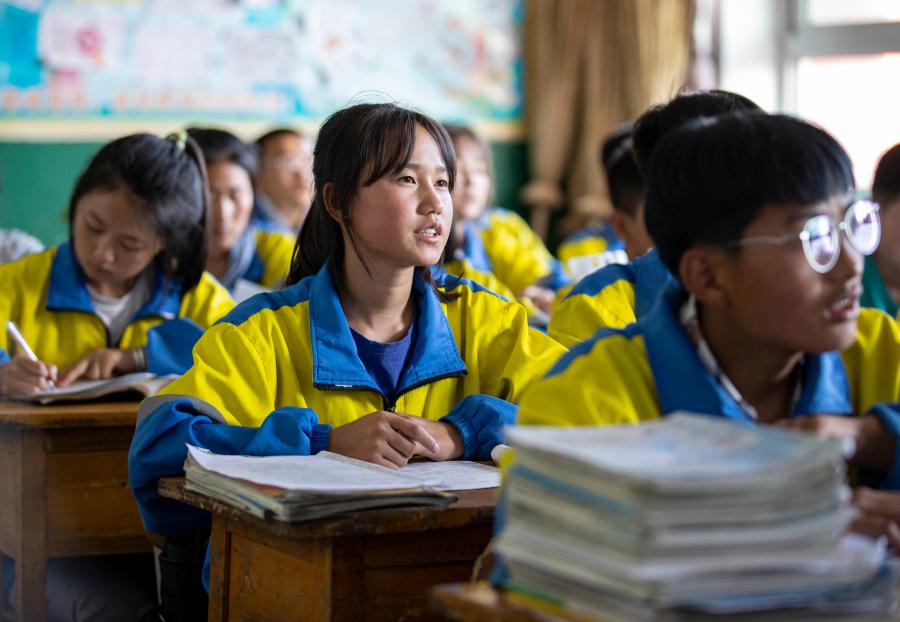
Students study at Tongxin No. 3 Middle School in Yuwang Township of Tongxin County, northwest China's Ningxia Hui Autonomous Region, June 21, 2021. (Xinhua/Yang Zhisen)
"Mother, my tears would never dry if I couldn't go to school," Ma wrote in her diary when her mother Bai Juhua suggested the 13-year-old drop out of school and learn tailoring or hairdressing skills.
Ma cried a river and asked her younger brother to read her diary to their mother.
The mother gave up the thought. In order to support her daughter, she had travelled far and did odd jobs to earn money.
Ma's hometown Zhangjiashu is a mountainous village in Tongxin County, Ningxia Hui Autonomous Region in northwest China. It is part of Xihaigu, a barren region that was deemed one of the most unfit places for human settlement by the United Nations in the 1970s.
"Now, all children have got access to free education thanks to the implementation of the country's nine-year compulsory education policy," said Ma Ruyun, principal of the Third Middle School of Tongxin County where Ma Yan once studied.
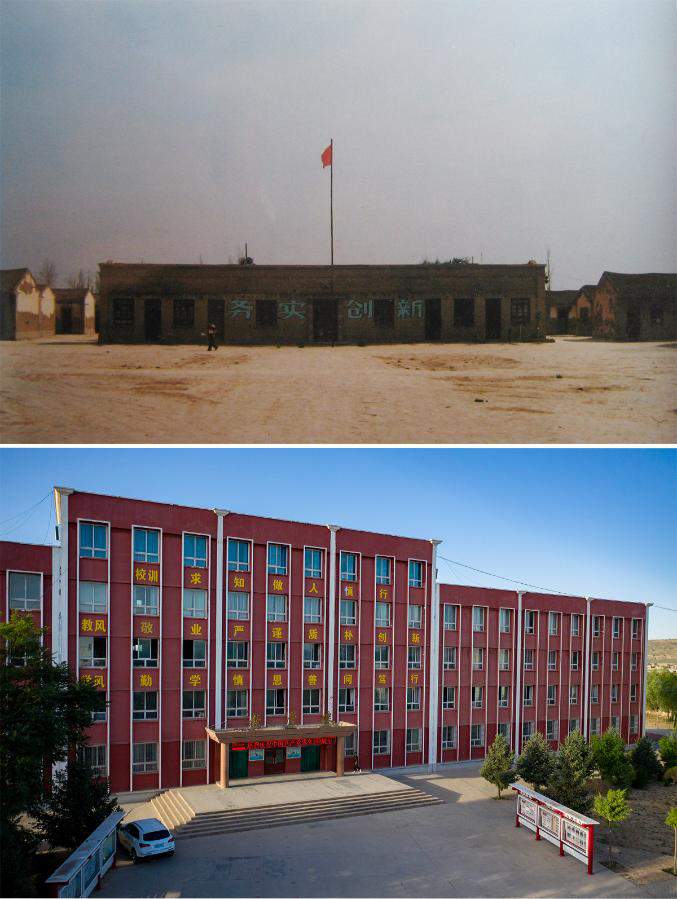
Combo photo shows the offices and meeting rooms of Tongxin No. 3 Middle School in March 2000 (top, file photo) and aerial view of the teaching building of Tongxin No. 3 Middle School on June 21, 2021 (bottom, taken by Yang Zhisen), in Yuwang Township of Tongxin County, northwest China's Ningxia Hui Autonomous Region. (Xinhua)
The bungalows where Ma once studied have now been replaced by concrete buildings with bright classrooms equipped with digital blackboards and internet. Students can attend online classes taught by experienced teachers in big cities.
After class, students were seen having fruits and snacks while some were playing basketball and table tennis on the playground.
Ma wrote in her diary that she and her classmates used to bring steamed buns as their only food at school. Now, students do not need to do so.
In the canteen, students queued up to fetch meal sets that include rice, meat and vegetables. They can enjoy free lunch after a national initiative was launched in 2011 to improve nutrition for rural students.
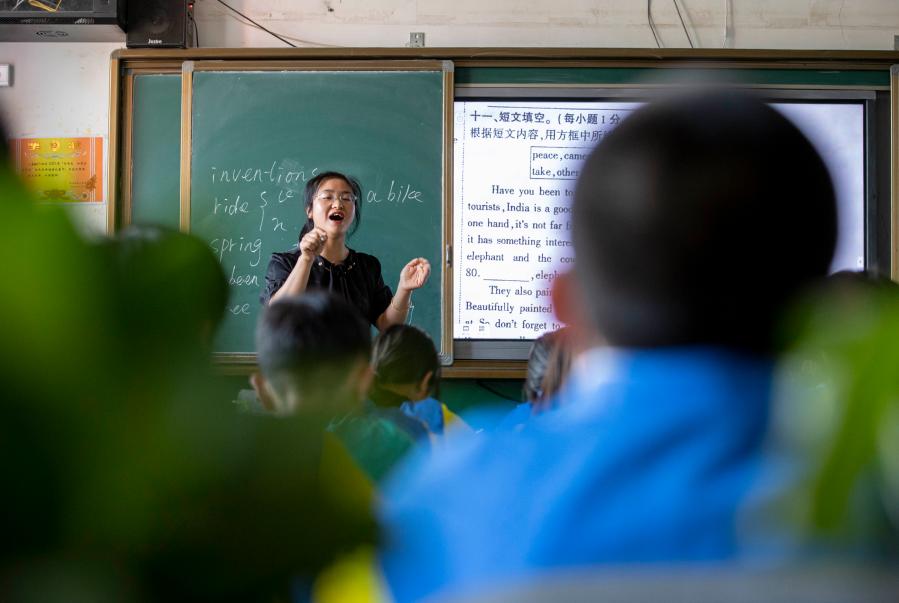
A teacher gives a lesson at Tongxin No. 3 Middle School in Yuwang Township of Tongxin County, northwest China's Ningxia Hui Autonomous Region, June 21, 2021. (Xinhua/Yang Zhisen)
"My parents also give me pocket money," said Li Dongmei, an eighth grader. Her family used to be on the registered impoverished household list, but thanks to the country's poverty-alleviation campaign, life has got much better.
Li is a boarding student and visits home on weekends. She has a cozy bed in a dorm shared by four girls with adorable decorations and 24-hour access to warm water.
Li also likes writing diaries. The hardcover notebook she uses was bought online, and the entries are mostly about interesting things such as teachers showing them movies, among others.
Ma wrote in her diary that not a single student was able to put on a simple performance when the teacher asked them to. On the contrary, Li had never encountered such an embarrassing moment in her life.
"The school holds extracurricular activities like reading competitions, speech contests, and sports such as tug of war," Li said.
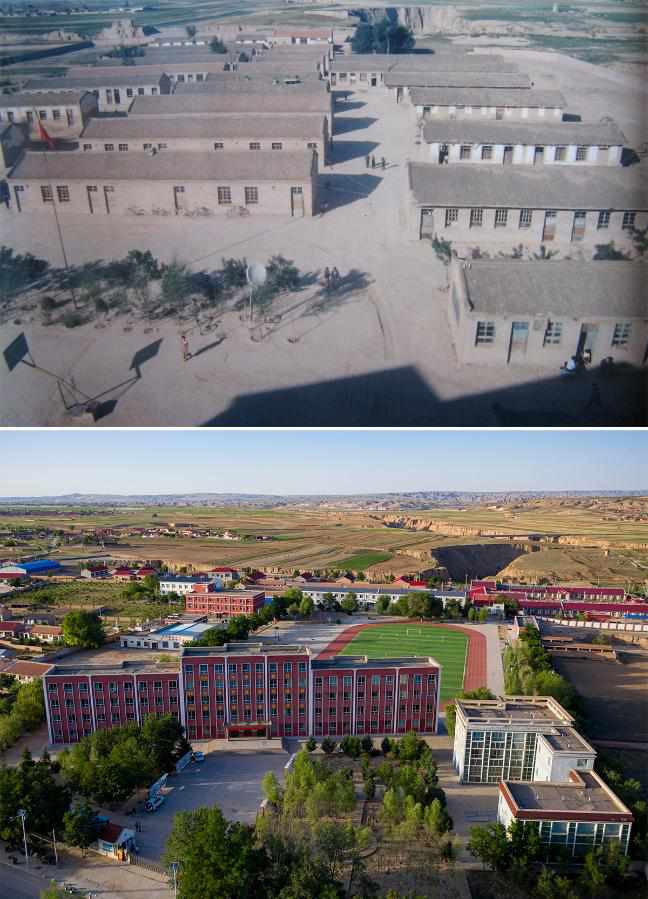
Combo photo taken in May 2003 (top, file photo) and on June 21, 2021 (bottom, drone photo taken by Yang Zhisen) shows Tongxin No. 3 Middle School in Yuwang Township of Tongxin County, northwest China's Ningxia Hui Autonomous Region. (Xinhua)
EDUCATION HERALDS CHANGE
"Every village has young men and women studying in universities now," said Ma Chengqi, Ma Yan's classmate from middle school.
Through education, Ma Chengqi has become a government employee, instead of working the land like his father and grandfather.
Recalling a moment from his childhood, he said he once saw his cousin weeping at the doorstep because the family had no money to pay for his tuition. "Villagers at the time were more concerned about filling their bellies and only a few understood the importance of education."
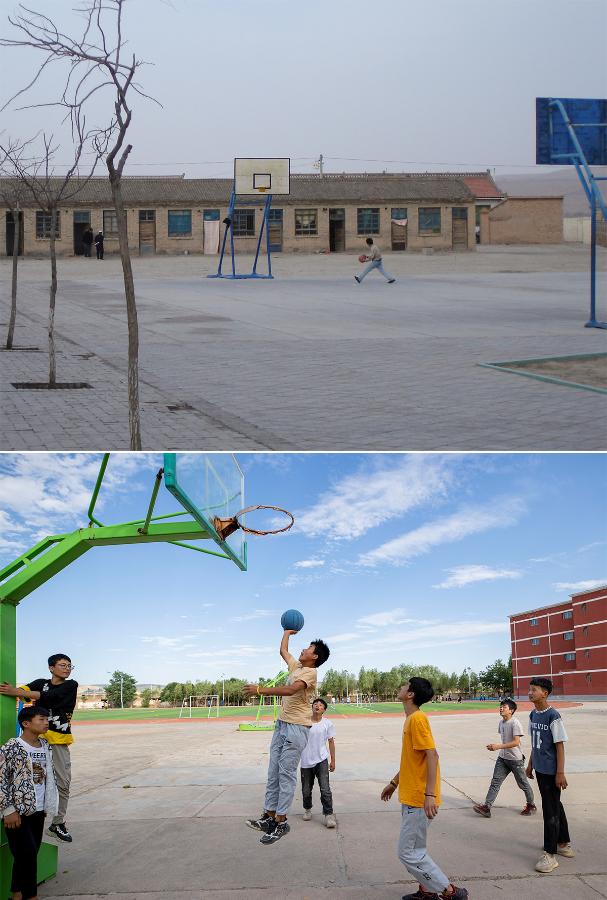
Combo photo taken in Nov. 2007 (top, file photo) and on June 21, 2021 (bottom, taken by Yang Zhisen) shows the basketball court of Tongxin No. 3 Middle School in Yuwang Township of Tongxin County, northwest China's Ningxia Hui Autonomous Region. (Xinhua)
Now even kindergartens, a concept Ma Chengqi never heard of when he was a child, are popular in rural areas. Statistics show that the gross enrollment rate of preschool education in Ningxia exceeded 88 percent in 2020.
"Today no girl drops out of school to get married," Ma Ruyun said. "Their parents are ready to send them to a vocational school to acquire skills even if they fail to gain admission to a senior middle school."
Photos
Related Stories
- Xi places great hopes on Chinese educators, education
- China strengthens crackdown on irregular off-campus tutoring
- Retired teachers to help improve education in central, western China
- Living allowances among China's initiatives to boost rural teaching capacity
- Fee standards to be set for tutoring courses
Copyright © 2021 People's Daily Online. All Rights Reserved.










